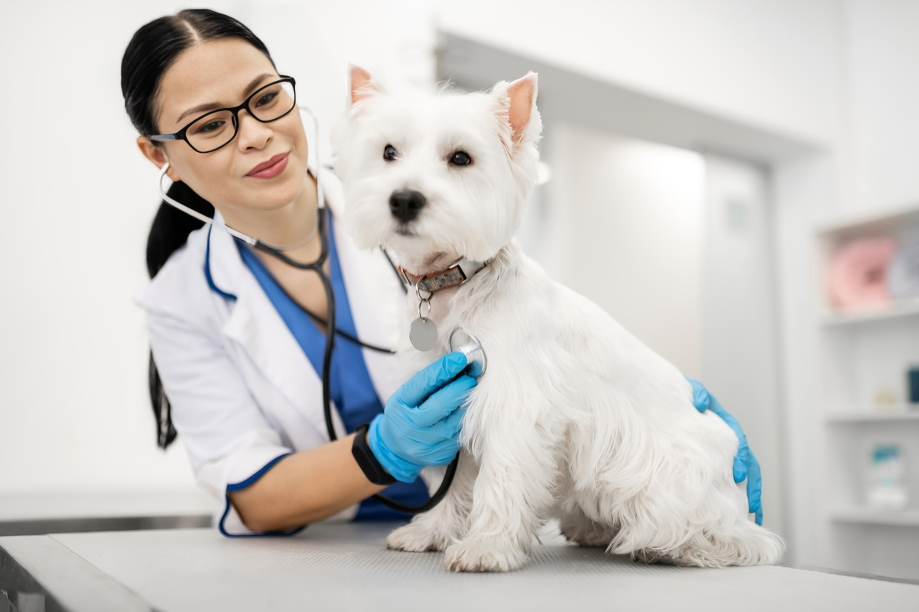Pet
How to Make Pete the Cat Ears: A Fun DIY Craft for Kids

Introduction
If you have a little one who’s a fan of Pete the Cat, why not bring the magic of Pete’s adventures to life with a simple and delightful DIY craft? Making Pete the Cat ears is a fantastic way to engage your child’s creativity and create a fun accessory that they’ll love to wear. In this step-by-step guide, we’ll walk you through the process of crafting Pete the Cat ears, complete with materials, instructions, and even some frequently asked questions to ensure a smooth crafting experience.
Materials You’ll Need
Before you dive into crafting Pete the Cat ears, gather the following materials:
- Blue construction paper
- Pencil
- Scissors
- Headband
- Glue
- Black felt or paper
- White chalk or crayon
Step-by-Step Instructions
Note: Adult supervision may be needed, especially when using scissors.
1. Draw and Cut the Ears
- Use the pencil to draw Pete the Cat’s iconic ears on the blue construction paper. They should resemble cat ears with a slight curve at the top.
- Carefully cut out the ear shapes using scissors.
2. Attach the Ears to the Headband
- Apply a small amount of glue along the bottom edges of the ears.
- Press the bottom edges of the ears onto the headband, ensuring they are evenly spaced and centered.
3. Create Pete’s Eyes
- Trace two circles onto the black felt or paper using a circular object like a small cup or lid.
- Cut out the circles and glue them onto the headband, slightly overlapping the top part of the ears.
4. Add Pete’s Whiskers
- Cut thin strips of black felt or paper for the whiskers.
- Glue the whiskers onto the headband, positioning them on either side of the eyes.
5. Draw Pete’s Signature Smile
- Use the white chalk or crayon to draw Pete’s characteristic half-moon smile beneath the eyes.
6. Let It Dry
- Allow the glue to dry completely before wearing or displaying the Pete the Cat ears.
FAQs (Frequently Asked Questions)
Q1: Can I use colored paper other than blue?
A1: Absolutely! While blue is the traditional color for Pete the Cat’s ears, you can get creative and use other colors that your child loves.
Q2: Can I make these ears with fabric instead of paper?
A2: Yes, you can. Consider using blue fabric for a more durable and long-lasting set of ears. Just remember that you might need different adhesive methods when working with fabric.
Q3: Are these ears suitable for adults?
A3: While the crafting process is simple, these ears are primarily designed for kids. However, you can adjust the size of the ears and headband to create a set that fits adults as well.
Q4: How can I make the ears more secure on the headband?
A4: If you’re concerned about the ears coming loose, use a stronger adhesive like hot glue to attach the ears to the headband.
Q5: Can I add more decorations to the ears?
A5: Of course! Get creative and add extra embellishments like glitter, sequins, or even fabric paint to make the ears uniquely yours.
Conclusion
Crafting Pete the Cat ears is a wonderful way to ignite your child’s imagination and immerse them in the world of their favorite feline friend. With simple materials and easy-to-follow steps, this DIY project guarantees hours of creative fun and a finished accessory that’s perfect for dress-up play or themed parties. So, gather your materials, follow the steps, and watch your child proudly sport their Pete the Cat ears with a big smile on their face.
Pet
Unraveling the Mystery: What the Heckin Dog

Dogs have been our trusted friends for a very long time, yet despite how close we are to them, we still don’t understand a lot of their actions and how they communicate. The fascinating world of what the heckin dog, with all its peculiarities, habits, and distinct communication styles, is explored in detail in this comprehensive book. Insights for understanding and relating with these lovable creatures will be provided in this post, whether you’re an experienced dog owner or thinking about getting a furry pet.
Understanding Canine Behavior
Dogs are multi-faceted animals whose activities reveal a wealth of information about their wants, feelings, and intentions. Understanding their actions allows us to connect with them on a deeper level and protects them from harm.
Body Language: A dog’s nonverbal cues reveal a great deal about their emotional state. Words are communicated through every gesture, from wagging tails to perked ears. You can’t possibly understand what the fucking dog is trying to tell you unless you learn to read his signals.
Social Hierarchy: As members of a pack, dogs have a natural tendency to establish and adhere to strict social orders. We may learn a lot about their social structure and pack dynamics by watching how they interact with people and other canines.
Instinctual Behaviors: The instincts of our ancestors are the source of many of the behaviors that dogs display today. Every action a dog does, from digging to chasing, has a purpose and sheds light on its innate tendencies.
Decoding Canine Communication
Dogs may not be able to communicate verbally, but they have plenty of other ways of getting their messages across. We can understand what they are trying to say if we pay close attention to their vocalizations and body language.
Barking: Of all the ways that dogs communicate, barking is among the most common. A dog’s bark may tell us a lot about its mood, purpose, and even its level of excitement—all depending on its pitch, length, and intensity.
Whining: When dogs whine, it’s usually because they’re unhappy or hurt. If we can figure out why they’re whining—is it because they’re anxious, in pain, or just want attention—we can meet their needs more efficiently.
Gestures and Expressions: Canines express themselves via a wide range of body language and facial expressions. These subtle signs convey a lot about their emotions and intentions, whether it’s a fun bow or a submissive smile.
The Bond Between Humans and Dogs
Dogs’ faithful companionship and versatility in the workplace have made them highly prized companions for humans for generations.
Service Dogs: Assistance dogs are lifesavers for people with disabilities, allowing them to live more independently and with more help throughout the day. Whether it’s directing the blind or alerting the deaf, these professionally trained canines are indispensable.
Therapy Dogs: In a variety of settings, including schools, nursing homes, and hospitals, therapy dogs offer companionship, emotional support, and comfort to those in need. They bring joy to people’s lives even in the worst of times, and their soft demeanor can change the world.
Working Dogs: They do everything from herding sheep to detecting bombs. They are incredibly useful allies in many domains because of their intellect, trainability, and devotion; with their support, humans may easily overcome difficult obstacles.
What the Heckin Dog? A Look into Canine Curiosities
Have you ever wondered why our four-legged pals act in such strange ways? What the fuckdog? Let’s investigate some of the most perplexing questions about it.
Why Do Dogs Tilt Their Heads?: As one of the most endearing and perplexing dog behaviors, the head tilt is a mystery to many. Although scientists have yet to pinpoint why dogs do this cute thing, they think it might help them hear and comprehend human speech.
Why Do Dogs Chase Their Tails?: What causes a dog to chase its tail is an eternal source of amusement, but why is it doing this? This behavior can indicate a variety of emotions, including boredom, excessive energy, a desire to play, or an effort to ease pain or annoyance.
Why Do Dogs Sniff Everything?: Sniffing is how dogs learn about their surroundings and how they perceive the world around them. Their acute sense of smell is crucial for navigating the world, from recognizing familiar scents to spotting possible dangers.
FAQs
How can I stop my dog from barking excessively?
Getting to the bottom of why your dog is barking too much is the first step in solving the problem. Excessive barking can be controlled with the help of mental and physical stimulation, the training of alternate behaviors, and the advice of a professional.
Is it true that dogs dream?
Dreaming happens during rapid eye movement (REM) sleep, which dogs also experience. During this phase of sleep, your dog is most likely dreaming if you see twitching, making noises, or moving their paws.
What should I do if my dog shows signs of aggression?
It is critical to identify and address the underlying causes of your dog’s hostility. Safe and successful behavior modification for aggressive situations can be achieved by consultation with a trained behaviorist or trainer who can help identify triggers and create a personalized strategy.
How can I help my dog overcome separation anxiety?
To assist your dog overcome separation anxiety, it’s important to build their confidence, create a schedule that they can count on, and gradually make them more comfortable being alone. Seeking expert help and providing reassuring toys or rewards could help as well.
What are some signs that my dog is in pain?
Your dog may be in discomfort if he or she changes his or her behavior in any way, including by becoming less active, less hungry, or making noises. It is critical to seek a veterinarian’s advice in order to determine and treat the root cause of your dog’s pain.
How can I train my dog to be more obedient?
To successfully educate a dog, one must be patient, consistent, and use positive reinforcement. With consistent discipline and the use of positive reinforcement like praise and food, you can train your dog to do what you want him to accomplish.
Conclusion
The indefatigability, intellect, and unfaltering devotion of dogs have enchanted humans for generations. We can learn so much about our canine friends’ personalities, habits, and communication styles from studying them, and it will open our eyes to new ways of living.
Pet
Healing Together: Supporting Your Child Through a Dog Bite Injury

The family dog is often considered a beloved member of the household and a trusted companion for children. However, even with proper training and supervision, Dog Bite can become aggressive and may bite, causing serious injury to a child. As a parent or guardian, it can be overwhelming and distressing to see your child go through such an experience.
In this guide, we will discuss the steps you can take to support your child through a Dog Bite injury and help them heal both physically and emotionally.
Understanding the Impact of a Dog Bite
A dog bite can have physical, emotional, and psychological impacts on a child. Depending on the severity of the bite, your child may experience pain, bruising, swelling, and scarring. They may also be at risk for infection or other complications. Emotionally, your child may be traumatized by the experience and may develop fears or phobias related to dogs.
It is important to address both the physical and emotional impacts of a dog bite injury for your child to fully heal and recover.
Seeking Medical Attention
If your child has been bitten by a dog, it is essential to seek medical attention immediately. Even if the bite seems minor, there could be underlying injuries that require treatment. Your child may also need a tetanus shot or antibiotics to prevent infection.
It is important to follow the doctor’s instructions for caring for the wound and any necessary follow-up appointments. Keep a close eye on your child’s physical symptoms and seek further medical attention if anything seems out of the ordinary.
Supporting Your Child Emotionally
In addition to physical care, it is crucial to support your child emotionally after a dog bite. They may feel scared, anxious, or even guilty for getting bitten. It is important to validate their feelings and reassure them that the incident was not their fault.
Encourage your child to express their feelings and listen to them without judgment. You can also help them cope by engaging in calming activities such as deep breathing, drawing, or listening to music.
Educating Your Child
As your child recovers from a dog bite injury, it is important to educate them about safety around dogs. Teach them how to approach and interact with dogs respectfully and safely. It is also important to reinforce the concept of always asking for permission before petting a dog, even if it is a family pet.
You can also educate your child about warning signs that a dog may be feeling agitated or scared, such as growling or baring teeth. This will help them avoid potentially dangerous situations in the future.
Seeking Professional Help
If your child exhibits persistent fear or behavior changes following the dog bite incident, it may be beneficial to seek professional help. Child psychologists or counselors can provide a safe space for your child to work through their trauma.
Additionally, if legal issues arise from the dog bite, consider consulting with personal injury lawyers in Tulsa, OK, who specialize in dog bite cases. They can advise you on your rights and help ensure that your child receives the necessary compensation for medical costs and emotional distress. Remember, taking care of your child’s mental health is just as important as addressing their physical injuries.
Conclusion
A dog bite injury can be a traumatic experience for both the child and their family. But with proper care, support, and education, your child can heal from the physical and emotional impacts of a dog bite. By seeking medical attention, providing emotional support, educating about safety around dogs, and seeking professional help if needed, you can help your child recover and prevent future incidents.
Remember, healing together as a family is the most important step to take after a dog bite injury. So, stay strong and supportive for your child and they will overcome this experience with your help. Let’s keep our children safe by promoting responsible pet ownership and teaching them how to interact safely with dogs.
Pet
Understanding Common Dog Health Concerns: A Guide for Pet Owners

As a pet owner, there’s no denying the unconditional love and joy that a dog can bring into your life. People cherish their furry companions, and it’s their responsibility to ensure their well-being. To do that effectively, it’s crucial to have a clear understanding of common dog health concerns. This article will provide you with a comprehensive overview of various health issues that can affect dogs and will shed some light on one specific respiratory condition known as Canine Infectious Respiratory Disease or CIRD.
Skin Problems
Skin problems are among the most common health issues in dogs. They can manifest in various ways, including itching, rashes, dryness, and hot spots. Allergies, parasites, and fungal infections are often the culprits. To maintain your dog’s skin health, it’s essential to provide a balanced diet, regular grooming, and consult a veterinarian if any issues arise.
Dental Health
Dental hygiene is often overlooked, but it’s a critical aspect of your dog’s overall health. Dental issues can lead to pain, infection, and even heart problems. To keep your dog’s teeth in good condition, establish a routine of brushing, offer dental chews, and schedule regular dental check-ups with your vet.
Obesity
Obesity is a growing concern among dogs, leading to various health complications such as diabetes, joint issues, and reduced life expectancy. Maintain a healthy diet, portion control, and regular exercise to prevent your dog from becoming overweight.
Joint and Bone Health
Arthritis, hip dysplasia, and other joint and bone problems can significantly impact your Dog Health quality of life. Keep an eye on your dog’s weight, provide joint supplements if recommended by your vet, and ensure your pet gets regular low-impact exercise.
“Furthermore, pet owners should remain vigilant for signs of carpal hyperextension in dogs, a condition that can lead to joint swelling and discomfort..”
Parasitic Infections
Parasites like fleas, ticks, and worms can cause discomfort and serious health issues for your dog. Regular preventive measures, such as flea and tick control, deworming, and heartworm prevention, are essential to keep your pet safe.
Allergies
Dog Health can suffer from allergies, which can be triggered by various factors, including food, pollen, or environmental factors. Common signs of allergies include itching, sneezing, and skin issues. Consult with your vet to identify the allergen and determine an appropriate treatment plan.
Gastrointestinal Problems
Gastrointestinal issues like diarrhea, vomiting, and constipation are common in dogs. These problems can be caused by various factors, including dietary indiscretion, infections, or underlying health conditions. Proper nutrition, regular feeding schedules, and prompt veterinary care are essential to address these issues.
Respiratory Conditions
Respiratory conditions can affect dogs, just like humans. One such condition that dog owners should be aware of is Canine Infectious Respiratory Disease. CIRD, often referred to as “kennel cough,” is a highly contagious respiratory infection. It’s commonly seen in dogs that spend time in close quarters, such as boarding kennels, dog parks, or shelters.
Symptoms of it may include a persistent cough, nasal discharge, and occasionally, fever. While it’s typically not life-threatening for healthy dogs, it can be more severe in puppies, older dogs, or those with weakened immune systems. To prevent this disease, consider vaccination and avoid exposing your dog to potentially infected individuals or environments.
Conclusion
In conclusion, understanding common dog health concerns is paramount for responsible pet ownership. By staying informed and proactive, you can provide the best care for your beloved canine companion. Regular check-ups with your veterinarian, a balanced diet, proper grooming, and preventive measures against parasites are all essential aspects of maintaining your Dog Health . Additionally, awareness of respiratory conditions like CIRD is crucial to keep your dog safe and happy. So, cherish your furry friend, and together, you can enjoy a long and healthy journey through life.
-

 Tech8 months ago
Tech8 months agoGuide to Nextdoorstudios: Your Ultimate Resource
-

 Entertainment8 months ago
Entertainment8 months agoIzanami Backwards: Unveiling the Mysteries
-

 Travel8 months ago
Travel8 months agoTravel Essentials for Women: Your Ultimate Guide
-

 Automotive8 months ago
Automotive8 months agoThe Ultimate Guide to Car Detailing Near Me
-

 Real Estate8 months ago
Real Estate8 months agoChoice Home Warranty Awards: Celebrating Excellence
-

 Entertainment8 months ago
Entertainment8 months agoUnraveling Octopath Traveler II NSP
-

 Home and Garden8 months ago
Home and Garden8 months agoExploring the World of Spelling Bee Forums: Your Ultimate Guide
-

 Entertainment1 year ago
Entertainment1 year agoShowbizztoday.com Entertainment Lifestyle Music Fashion: Your Ultimate Guide




















